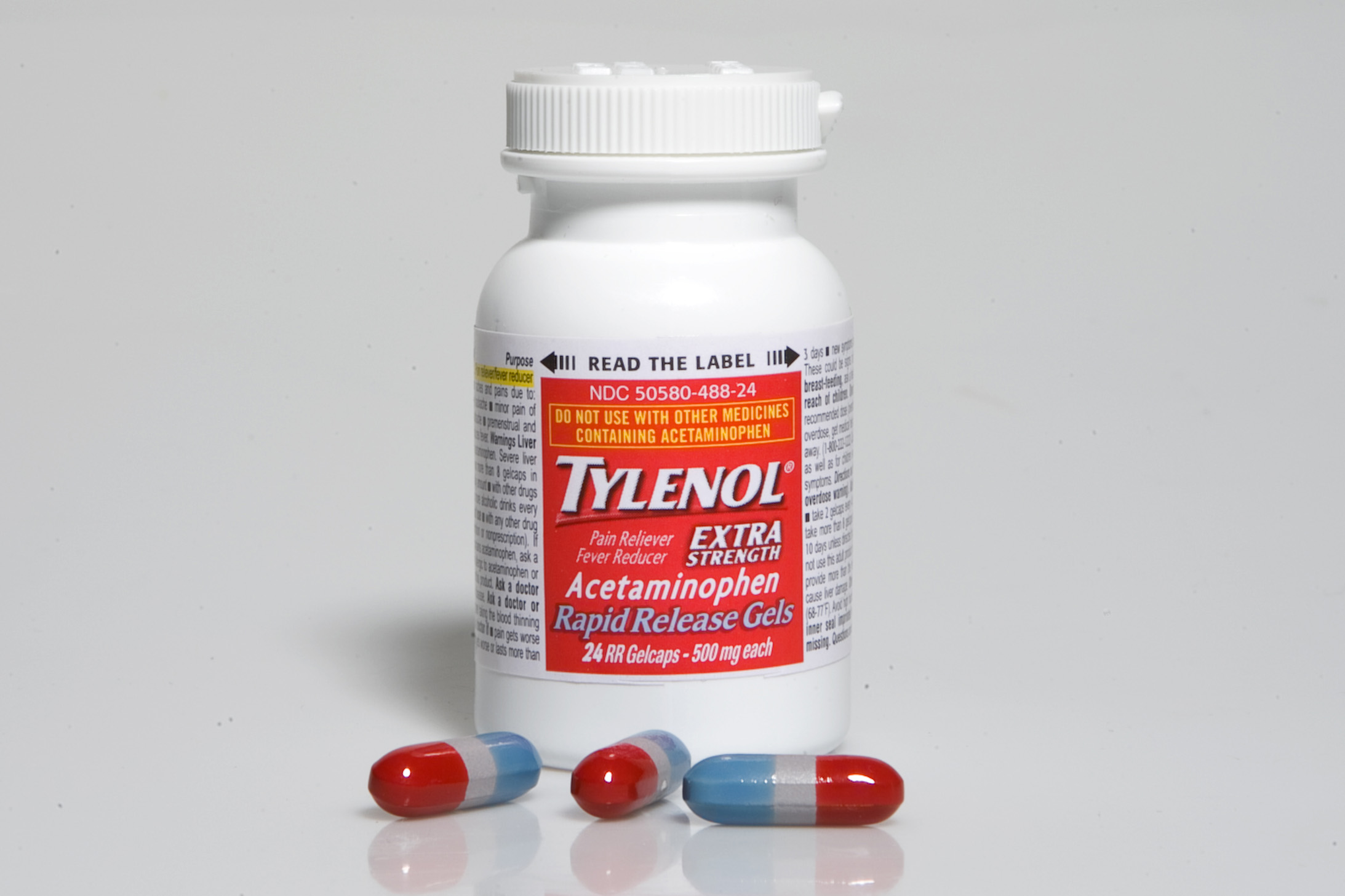As a child of the 1980s, I have vague memories of being warned about Halloween candy, not that it went any farther than being cautious about unwrapped candy. Since Smarties didn't come hermetically sealed, this was a minor tragedy; on the other hand, it probably cut down on the temptation for do-gooders to give us fruit.
Then and since I assumed the whole point was to add a frisson of holiday terror. But growing up in the sticks, I missed how much this terror seized America—and originated out of the infamous, still unsolved Tylenol deaths of 1982, which Chicago published a fascinating oral history of two years ago.
If you're not familiar with it: someone laced Tylenol capsules with potassium cyanide, killing seven people, all in the Chicago area. The tamper-proof packaging of medications that is standard now is largely a result.
Stories about Halloween-candy poisonings (and razor blades in apples) had been floating around prior to the Tylenol incident, and it's not an entirely obvious jump from a terrifying but geographically limited poisoning of an over-the-counter medication to candy. But the story broke on October 1. Perhaps if it hadn't happened in the run-up to Halloween, the connection wouldn't have been made. But by the time the 31st rolled around, the genial fears of the holiday had been overshadowed by terror.
By October 5, Jane Byrne was already on the record:
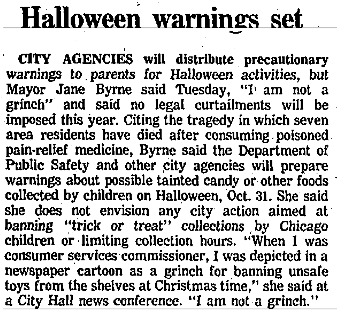
Following through on Byrne's promise to prepare warnings, the city printed one million leaflets; Byrne herself went farther still, telling Chicagoans that "if she had young children, she wouldn't let them accept any food or candy," and suggesting that "residents hand out small toys or money instead of food."
Bensenville straight-up banned trick-or-treating that year after "a supply of a dangerous drug used to kill animals was stolen from a local veterinary clinic." Cook and DuPage county, according to the Tribune, urged residents "to hand out pennies, nickels, small toys, balloons, or pencils." And the paper quoted a "northwest suburban official" on the possibility of legal prohibitions for Halloween 1983 (emphasis mine): "They could range from a ban on edible treats, to trick or treating only during the day, or restraining trick or treaters to their neighborhood.
Woe be it, then, for any kid who got stuck here: "The Poplar Hills Home Owners Association in Hoffman Estates, representing 7,000 subdivision residents, has instructed parents to pass out coupons rather than edible snacks. Spooks, pirates, ballerinas, or any trick or treaters can redeem them later for candy at two nearby stores."
Things started to go bump in the dark of the 1980s, like Trib star columnist Bob Greene, who advised: "If you are a parent, and you have any sense, you will forbid your child from going out trick-or-treating this Halloween… in this year of the Tylenol killer it would be especially foolish to let a boy or girl go door-to-door asking for food."
Instead, Greene gave kids a ghost story to stick in their non-existent paper bags:
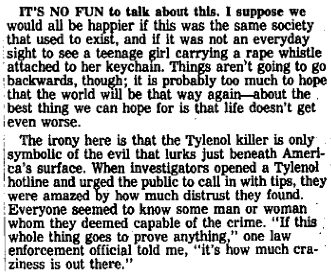
Who knows what eeeevil lurks in the hearts of men… Bob Greene knows.
It's a heck of a scary story: be afraid, of everything, especially the future.
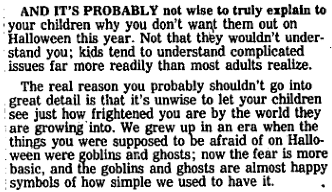
And the fear persisted. In 1984, the Trib talked to a Brach vice president, who told the paper that their sales were "like two sides of a mountain with a valley down the middle. In '82 the manufacturers had already shipped out a lot of Halloween candy; then, when it all went on display, the Tylenol thing hit. There was a lot of publicity, and the crazies jumped on it."
Orders for candy dropped in 1983 after so much was remaindered in 1982. Sales rebounded in 1984, but the city remained wary; the paper listed nine hospitals offering free examinations or X-rays for candy in an article entitled "Halloween Makes a Comeback—But Cautiously." After seven years passed, the paper finally felt safe reporting that the decline of Halloween—"suburbia began to look like a ghost town every October 31"—had been arrested by Boomers and their economically influential penchant for childhood nostalgia (which we've previously discussed).
Joel Best, a sociologist at the University of Delaware, has kept up with fears of "Halloween sadism." He's found two peaks of double digit reports, one in 1970-1971, with 10 the first year and 14 the second, perhaps explained by the fear of hippies. The other was 1982, and as Halloween came back, they vanished.
In 1986, he told the Trib's Bill Stokes that "almost all the incidents are hoaxes… and in most cases the child is the one who perpetrates it. That's why common items such as pins are used…. It is a way for the child to get the attention of parents and of the police and reporters."
People like to scare themselves, not just kids. Which is the best way I think of to explain the best question ever sent to Ann Landers, about a classroom filled with the Children of the Candy Corn:
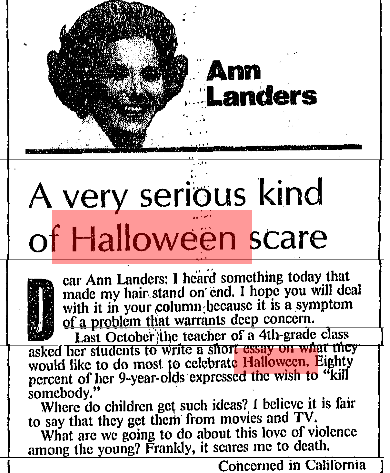
Boo!



